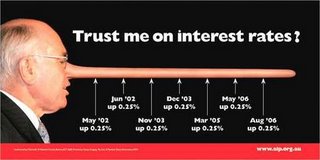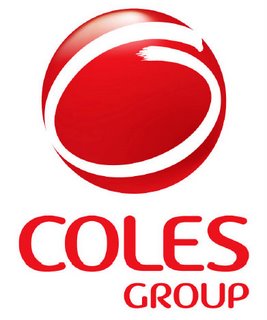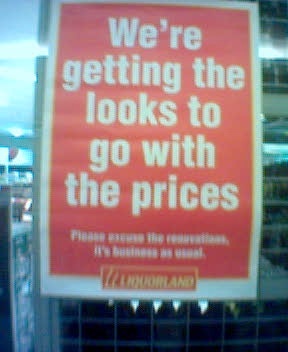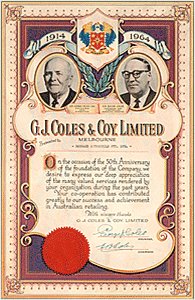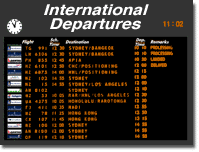
The start of each year for us at DIFFUSION is an important time for reflection…we normally look back at the year just past, write ourselves a report card and talk about and plan for the coming year. In this vein, we thought it would be good to share what trends we believe may be impacting business in 2006. Specifically, our focus is on brand, marketing and communications, but we believe the trends below have much broader implications, both personally and as business leaders.
1.TECHNOLOGY WILL DESTROY THE SEPARATION BETWEEN PERSONAL AND WORK LIVESTechnology will cause and enable overlap in our social, work and personal lives.
Example: Finding jobs is not an out of home activity, employees will do it at work. They are no longer dependent on newspapers but technology and social networks.
Implication: People will cache their time even though they will overlap it via their use of technologies.
Brand/marketing impact: More permission based and pull-marketing. Brands built around maintenance of whole-of-life will succeed.
DIFFUSION tip: Concentrate on more permission based marketing, focus on a whole-of-lifetime offer.
2. BRAND WILL BECOME MORE ABOUT BUILDING AND MAINTAINING EXPERIENCES AND LESS ABOUT MARKETING AND ADVERTISING Increasingly brands will develop and survive by maintaining a long term relationship with customers, who are re-examining and re-evaluating products and services for value and usability.
Example: Casella Wines - non-traditional approach to marketing makes it No1 wine export for Australia and dominates US market. Reidel glassware - repositioning as the Wine Glass company creates illusion that wine is better drunk from its stemware and meets customer desire.
Implication: Key product differentiators will be not be what marketing employees and advertising agencies tell you but what your customers tell you.
Brand/marketing impact: Marketing and advertising will become less meaningful. If you don’t give customers what they want, someone else will.
DIFFUSION tip: Concentrate on brand strategy that encompasses a long term customer experience.
3. CHINESE BRANDS WITH THE POTENTIAL TO DOMINATE MARKETS WILL START TO EMERGEChina’s government has been preparing the top 150 companies to go overseas and expand. Over time China, like Japan, will change it’s image from cheap manufacturer to premium quality manufacturer at a value price.
Examples: Lenovo is now third largest PC maker in the world. Haier's bid for whitegoods manufacturer Maytag, would have given it 30% market share in the US. TCL is the world’s largest television manufacturer. China’s share of worldwide LCD market doubles in ONE year.
Implications: Via brand name acquisition, Chinese companies will gain access to global distribution markets, sophisticated R&D and recognisable brand names.They will be a threat.
Brand/marketing impact: Brand differentiators on price and quality will continue to erode, customers will go to the cheapest offer.
DIFFUSION tip: Develop stronger and more specific brand place and point of origin strategies for your business.
4.CUSTOMERS WILL NOT ONLY DISINTERMEDIATE YOUR INFORMATION, THEY CAN DISINTERMEDIATE YOUR BUSINESSThe demand economy gives customers the tools they need to demand immediate, personalised fulfilment whenever and wherever they desire.
Example: Personalisation offered by Amazon, Dell, eBay and TripAdvisor means we can customise, configure, self select, review and critique, buy, sell, trade and destroy businesses and traditional business models in one go. HMV in UK, effectively disintermediated itself within its own market.
Implication: Customers will find other retailers and suppliers if you don’t give them what they want, when they want and in the way they want. It’s more of a global market than you think.
Brand/marketing impact: Whole of brand experience needs to focus on satisfaction elements. Don’t ignore personalisation.
DIFFUSION tip: Develop customer advocacy within your business.
5. THE SCALE, SCOPE AND REACH OF GOVERNMENT WILL CONTINUE TO INCREASEWe are subject to increasing government scrutiny, not just in the guise of national security concerns, but in our everyday activities such as the cost of running and maintaining business.
Example: The Australian Public Service has grown by 16% since 2000. Capital spending on defence alone will be $52b in the coming years; Australia’s taxation laws run to 10000 pages and it costs $30b and 80000 people to defend and avoid it.
Implication: We will become increasingly isolationist, defence will continue to eat up government spending and against the grain of globalism the idea of national sovereignty is being emboldened and becoming increasingly jingoist. Personal freedoms and the ability of business to operate freely has become more difficult. We are now subject to more red tape than ever.
Brand/marketing impact: Opportunity to provide more 'protection': brand messaging; products that lessen bureaucratic impacts
DIFFUSION tip: Concentrate on messaging that provides safety and security messaging. Traditional and Australian is good.
6.TRADITIONAL MARKETING MANAGERS ARE DEADMarketing Managers roles are diversifying and changing to the point where their validity needs to be questioned.
Example: Executive marketing section of seek.com only listed 16 of 74 jobs for marketing managers.
Implication: Selling has become much more complex and diverse expertise is required across increasingly specialised areas.
Brand/marketing impact: True marketing departments will no longer exist, businesses will need to be more flexible employing a range of ‘experts’.
DIFFUSION tip: List what skills your business needs, assess your Marketing Manager and put in place strategies for accessing experts you really need.
7.CONSUMERS WILL BECOME PARTICPANTS IN YOUR BUSINESSConsumers are becoming increasingly participant in business, but there is a catch.
Example: Participant consumers have increased power through the internet, consumer protection laws and access to mass media.
Implication: Unhappy participant consumers can do your business major damage.
Brand/marketing impact: Honesty, scrutiny and open communication are vital.
DIFFUSION tip: Don’t just have a complaints policy, have a meaningful and closely tracked customer feedback process in place.
8.ETHICS WILL CONTINUE TO GROW AS A PRIORITYHistorically, aiming for shareholder satisfaction has meant that ethics takes a back seat…not any more.
Example: Strategy + Business magazine, ethics voted third most important concept of last 10 years. Practicing ethical communication has been stated as the “greatest challenge in the 21st century”.
Implication: The public, broader community, employees and business itself is demanding that companies act ethically.
Brand/marketing impact: Changing role of those responsible for communication in your organisation.
DIFFUSION tip: Allow communication (and marketing and customer relations managers etc) to provide real advice and critical feedback; don’t make them simply corporate mouthpieces.
9.RITUALS ARE BECOMING INCREASINGLY IMPORTANT (AGAIN)Increased secularisation and loss of community has lead to a need for rituals.
Example: The rise in urban or consumerist rituals spread primarily by the mass media.
Implication: These rituals sustain, but do not transform. What we need is 'communitas' – a social structure based on common humanity, not hierarchy – brought about by liminality.
Brand/marketing impact: Liminality, a ritual of change, contains, according to theorist Turner “the seeds of the future.”
DIFFUSION tip: Seek to encourage opportunities for liminal events in our organisations and encourage those who are creative thinkers. Richard Florida also has a lot to say on the role of creative thinkers within society.
10.FIRST CAME PUSH, THEN PULL, NOW ADVOCATEPush marketing, replaced by pull marketing or push/pull combinations is being replaced by customer advocacy.
Example: Due to growing customer power and lack of response to traditional marketing models, Glen Urban is urging a model of advocacy… “truly representing your customers’ best interests”.
Implication: Advocacy will become the norm for business behaviour, if your not practicing it, your competitors will be soon.
Brand/marketing impact: Review of much more than your CRM system…this trend requires a major overhaul in approach.
DIFFUSION tip: Look for ways you can provide open, honest and complete information to your customers now, including products that are not yours!
The future is hard to predict…and we don’t recommend the fortune cookie method as a way to plan for business. A way forward is to sit down in your business, pull together a cross section of employees (people whose opinions you trust) and brainstorm what trends are going to impact you and how you are going to tackle them both as threats and opportunities for the future.
This formed part of a presentation to the CEO Institute of Australia, 17 Januray 2006. For the full text of this presentation email ideas@diffusion.com.au
